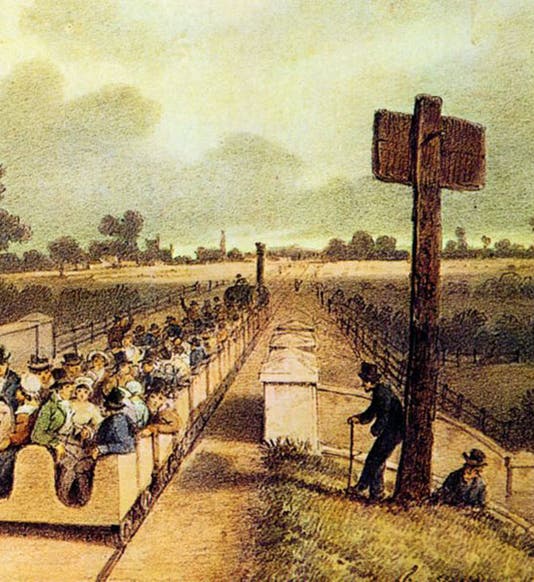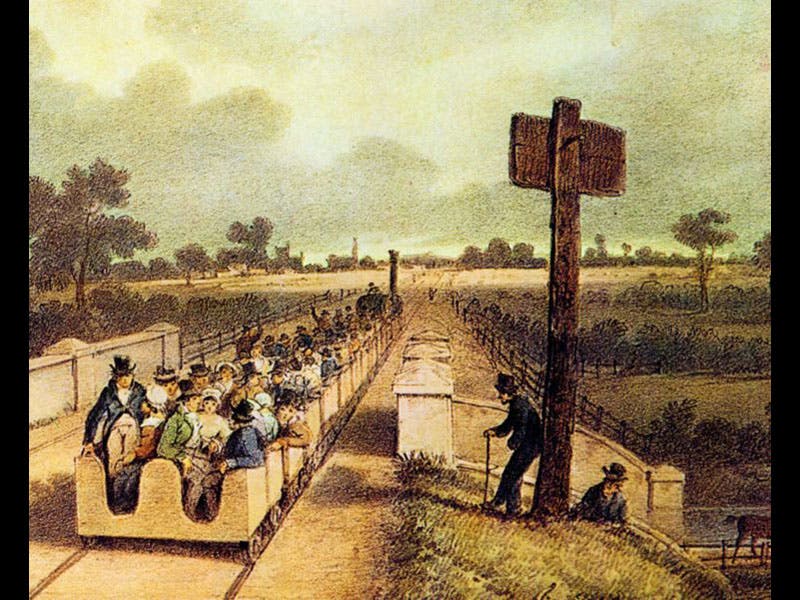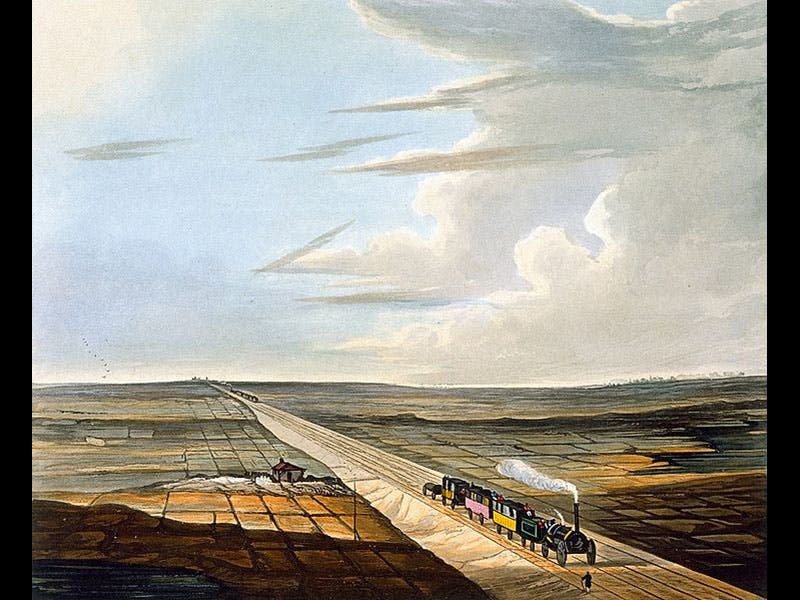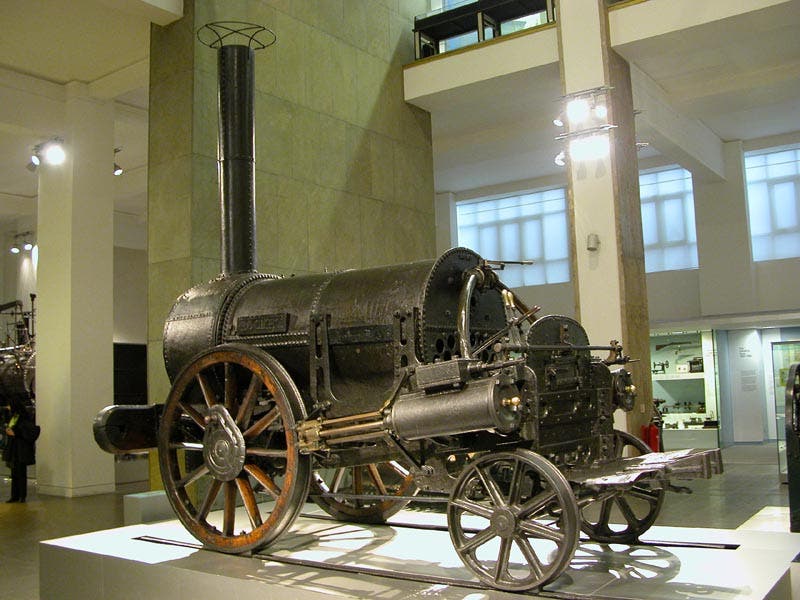Scientist of the Day - George Stephenson
George Stephenson, a British engineer, was born June 9, 1781. Stephenson was as responsible as anyone for the Golden Age of the Railroad, which began when the Liverpool and Manchester Railway opened in the fall of 1830. Stephenson had been building steam locomotives for fifteen years for the collieries (coal mines) of Killingworth, and the idea of shipping not just coal, but passengers and freight, between port cites and manufacturing cities was largely Stephenson's. His firm arranged for (and won) the famous Rainhill Trials in 1829, when a Stephenson locomotive, the Rocket (designed by his son Robert) showed that a moving steam locomotive was superior to a standing engine, or a team of horses, in moving carriages by rail. Stephenson was also largely responsible for the establishment of Mechanical Engineering as a discipline separate from Civil Engineering, serving as the first president of the Institution of Mechanical Engineers, which was founded in 1847. And it is also Stephenson that you have to blame for the fact that the worldwide standard railway gauge is 4 feet 8 1/2 inches. The images above all commemorate opening day of the Liverpool and Manchester Railway, Sep. 15, 1830, showing the first train (first image); Wapping tunnel (second image), the crossing of Chat Moss, an extensive peat bog (third image), and the Rocket, as it sits on display today in the Science Museum in London (fourth image). There is a substantial section on Stephenson, the Rainhill Trials. and the Liverpool and Manchester Railway in Bruce Bradley’s pamphlet for the Library’s 2008 exhibition: Locomotion: Railroads in the Early Age of Steam; the Rocket is on the front cover (fifth image). Dr. William B. Ashworth, Jr., Consultant for the History of Science, Linda Hall Library and Associate Professor, Department of History, University of Missouri-Kansas City. Comments or corrections are welcome; please direct to ashworthw@umkc.edu.











